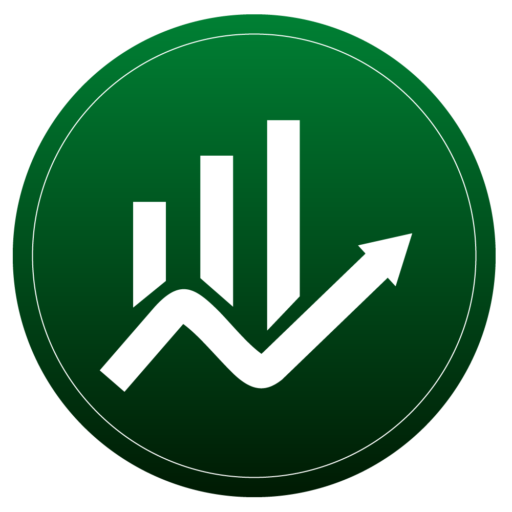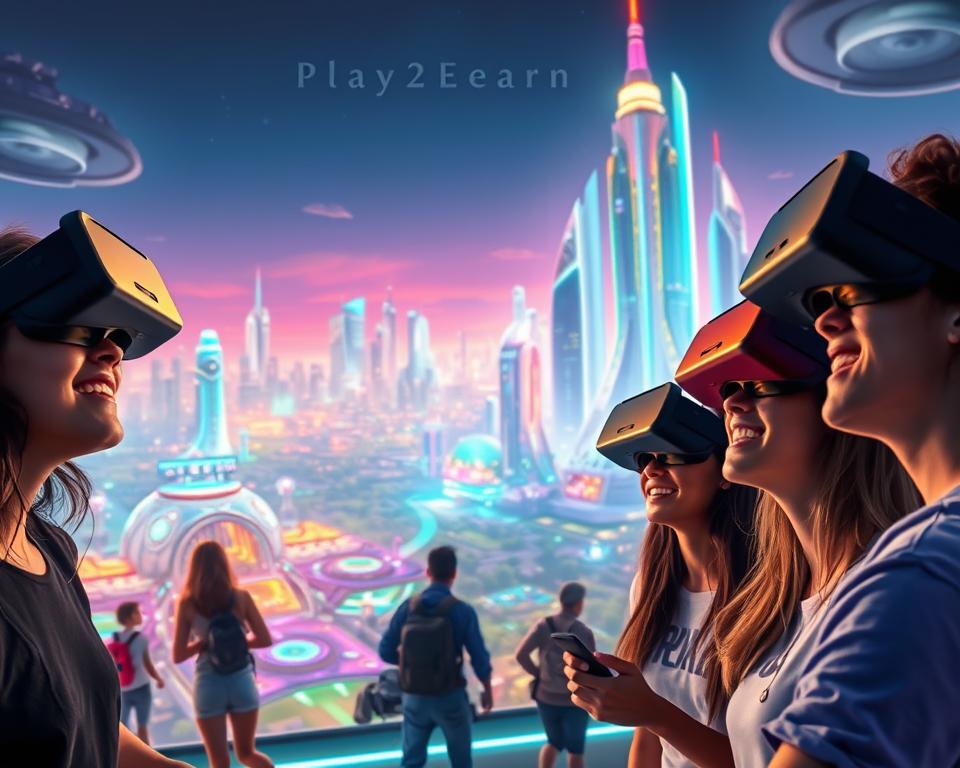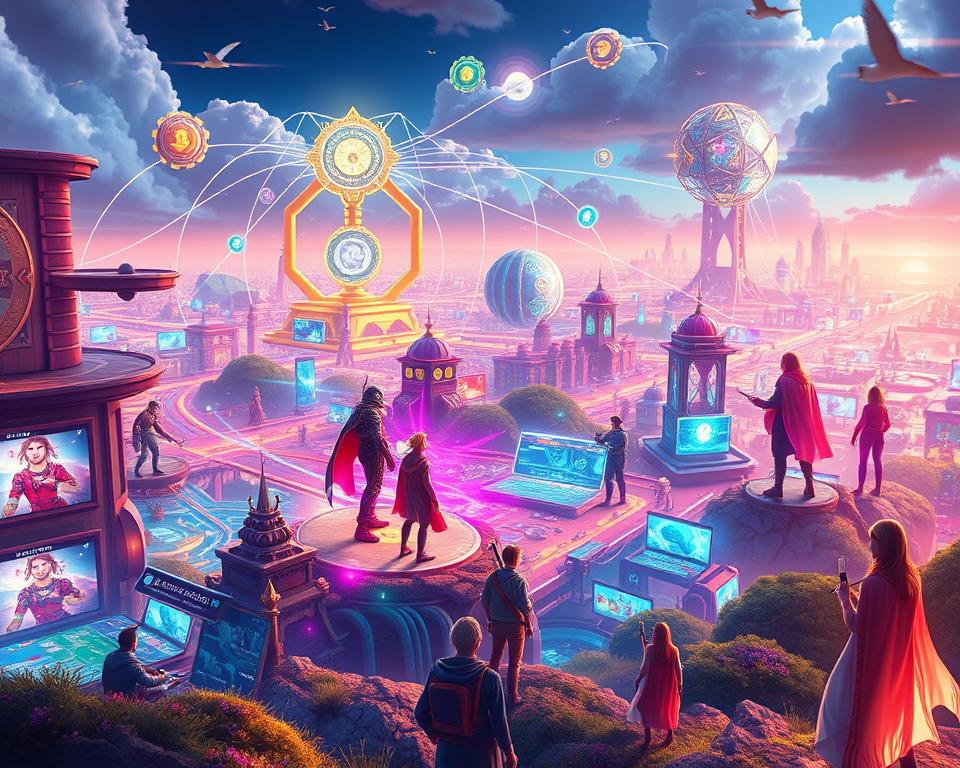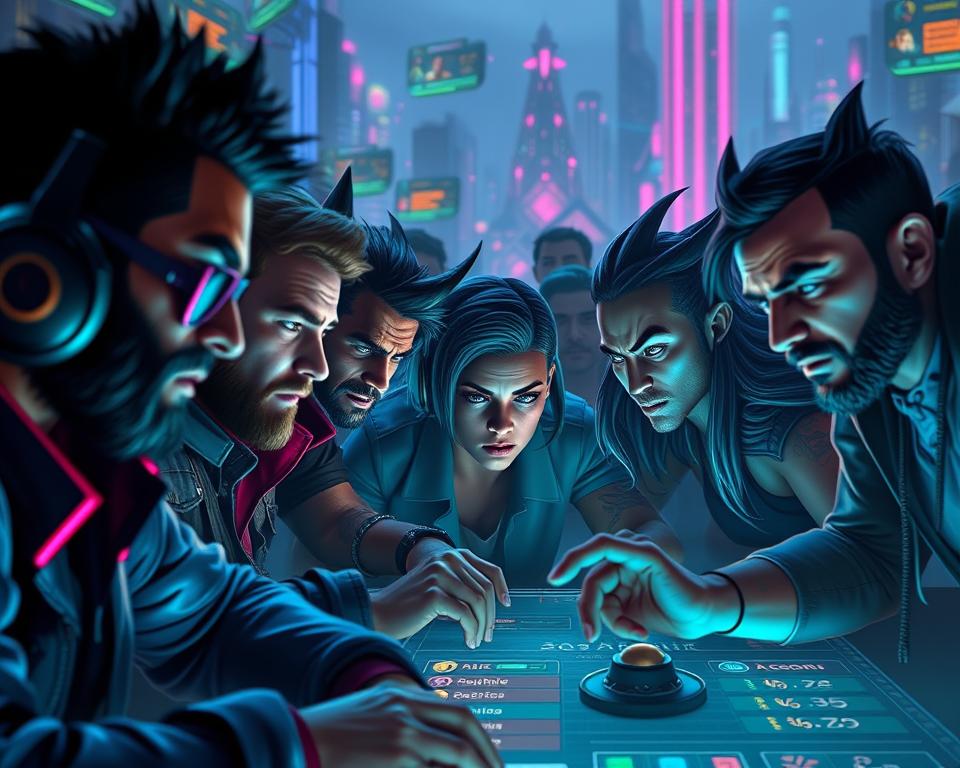Anúncios
play to earn games are reshaping how you think about time spent in virtual worlds.
What if your favorite pastime could also change how you collect assets, learn marketplace skills, and join new communities?
This roundup gives you a clear, no-hype overview of standout titles across Solana, Sei, Ronin, and Ethereum sidechains.
You’ll see which entries are live, which are in beta, and which still experiment. That helps you weigh stability against innovation before connecting a wallet or an app.
We note how NFTs and crypto factor into ownership and trading, and we flag simple checks—marketplace activity, community signals, privacy steps, and fees—that you can follow.
For a deeper look at the industry context and user trends, see this concise guide on how gaming meets earning: industry roundup.
Introduction
play to earn games are attracting U.S. players by blending familiar loops with blockchain-based ownership features.
Why the interest now? Current live and beta titles—from Solo Survivor on Sei to The Sandbox and Battlefrens on Solana—show how a single game can offer classic progression plus optional on-chain items. Some projects reward with crypto or NFTs; others use items mainly for ownership and progression.
Headlines that a title goes live or dropped an update “hours ago” are common. Look past hype and check clear token mechanics, user safety, and documented features. Top blockchain ecosystems differ in fees and speed, so the chain you pick will shape your experience.
- Real ownership can mean trading, cross-platform utility, and community governance.
- These remain games first — fun and progression should guide your time in the world.
- Before connecting a wallet, read roadmaps, official docs, and be cautious with pop-ups and cookies.
In the roundup that follows, you’ll find survival roguelikes, metaverse builders, and simulators with distinct approaches to rewards and ownership. Explore responsibly and verify sources as you try new experiences.
What are play to earn games?
Start here if you want plain language on tokens, unique items, and how different access models work.
Plain-English basics: ownership, tokens, and NFT items
NFTs are unique in-game items you hold in a wallet. You can trade them on marketplaces or, in some cases, use them across compatible apps.
Tokens act like in-game currency. They fund upgrades, fees, or market trades and may be swapped depending on the ecosystem rules.
Trading is simple: buy an entry item, earn drops while you play, then list items for sale. Always verify listings on official marketplaces or on-chain records.
Free access versus pay-to-participate models
Some titles let you start free; others require an entry NFT or package. Both can exist in the same game. Free access lowers upfront risk. Paid entry can unlock premium features or early trading options.
What “Live,” “Beta,” and “Developing” mean for you
- Live: steady play, common features, active markets (example: Pixels).
- Beta: testing stage, balance and rewards may change (examples: Illuvium, Battlefrens).
- Developing/Alpha: early builds with shifting features and higher risk.
Practical tip: set up a separate wallet, connect only via official links, and review app permissions before approving. Check roadmaps and team updates before committing time or funds.
Editor’s picks: live and emerging blockchain games to watch
Below are short, factual snapshots of standout titles you might try on Solana, Sei, and other chains.

- Battlefrens (Solana, Beta) — Turn-based PvP with NFT-backed units and possible crypto rewards. Try it if you like quick rounds and deck-style tactics.
- Solo Survivor (Sei, Live) — A 2D survival roguelike with session runs and on-chain items. Good for survival fans who want short, repeatable runs.
- Rollercoin (Live) — Browser mining simulator that pays in crypto. Study task mechanics before you invest time in power upgrades.
- Veggies Farm (Live) — Seed, harvest, craft, and trade NFTs on-chain; check marketplace liquidity and fees first.
- The Sandbox (Live) — User-created world where NFTs map to land and assets; ideal if you want a creator platform and social building.
- Heroes of Mavia (Live) — Base-building and PvP for RUBY with long-term progression and strategic battles.
- ENJ Excavators (Live) — Casual clicker that eases new players into on-chain loops and crypto rewards.
- Pixels (Live) — Pixel MMORPG with seasonal events, social features, and NFT trading inside its platform.
- BITMINER (Live) — Mine-and-craft focus with NFT items; review item utility and trading rules first.
- Illuvium (Beta) — Collector-focused auto-battler; expect frequent updates while it matures.
Practical tip: always confirm a title’s live status on official channels and read user guides before you trade or link a wallet.
How earning works: tokens, NFTs, and on-chain economies
How rewards arrive in your wallet starts with understanding tokens and unique items.
In-game currencies and marketplaces
Tokens act like in-game money. They are fungible and may fund upgrades or fees.
NFTs are unique items with distinct traits. Not every token is listed on exchanges; verify liquidity before you trade.
Marketplaces list rarity, stats, and fees. Fees and gas affect net outcomes for players.
NFT acquisition: buy, rent, or start free
Many titles let you begin free and later upgrade. Other projects require an entry NFT.
You can buy on official marketplaces or rent through supported systems that share rewards. Rentals cut upfront cost but add contract risk.
Reward mechanics and distribution
Rewards come from quests, battles, leaderboards, crafting, or events. Distribution may be performance-based, pooled, or time-emitted.
Note: airdrop events can reward active players. Confirm eligibility and claim steps before connecting a wallet.
- Deck choices affect outcomes in strategy titles.
- Craft loops need inputs and sinks; learn them to avoid waste.
- Some rewards scale with consistent hours; set your own limits.
Quick safety tip: review smart contract approvals and check others’ experiences to gauge real-world risk.
Getting started safely: wallets, costs, and risk management
Before you link a wallet or buy an item, set up a simple safety checklist that saves time and cash.
Wallet setup and chain compatibility
Choose a wallet that supports your target chain. For Solana use Phantom or Solflare. For Ronin use Ronin Wallet. For Sei use compatible Sei wallets. For Ethereum sidechains, pick a mainstream EVM wallet.
Download wallets only from official sites or app stores. Back up your seed phrase offline and never share it. Connect via official domains and avoid links from ads or unsolicited messages.
Upfront costs, ongoing fees, and time investment
Expect upfront costs for entry NFTs or optional upgrades and ongoing gas or marketplace fees. Budget conservatively and only risk funds you can afford to lose.
Plan your hours: some loops need steady weekly time, while casual simulators fit short sessions. Test low-risk actions first — small trades or claims — then scale as your experience grows on the platform.
- Review contract approvals and revoke unused permissions regularly.
- Manage cookies and site permissions for better privacy.
- Verify airdrop pages and never sign unknown transactions.
Need a safe wallet primer? See how to create your first cryptocurrency wallet before you get started.
Conclusion
Use this short guide to match a project with your schedule and appetite for on‑chain risk.
You now have a practical view of how blockchain games blend fun with ownership.
Choose a game that fits your hours, genre (card or action), and wallet comfort.
Check community channels and user feedback before any trading or claim. If an airdrop appears, verify details on official pages first.
Remember legacy projects like Axie Infinity show how models can shift fast. Test features, back up keys, and spend only what you can afford. Pause and re‑check links when in doubt.



